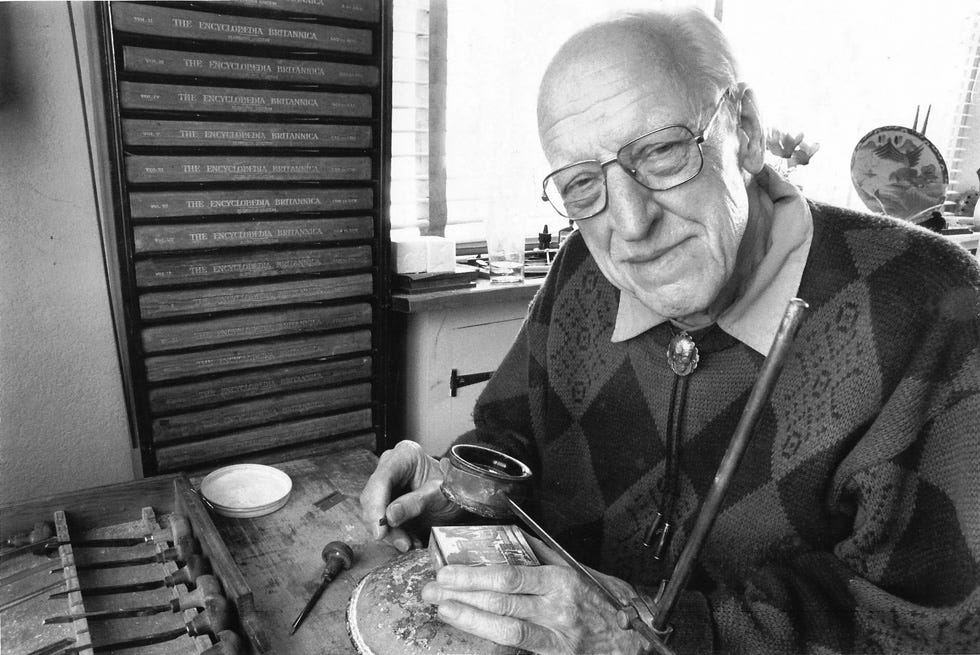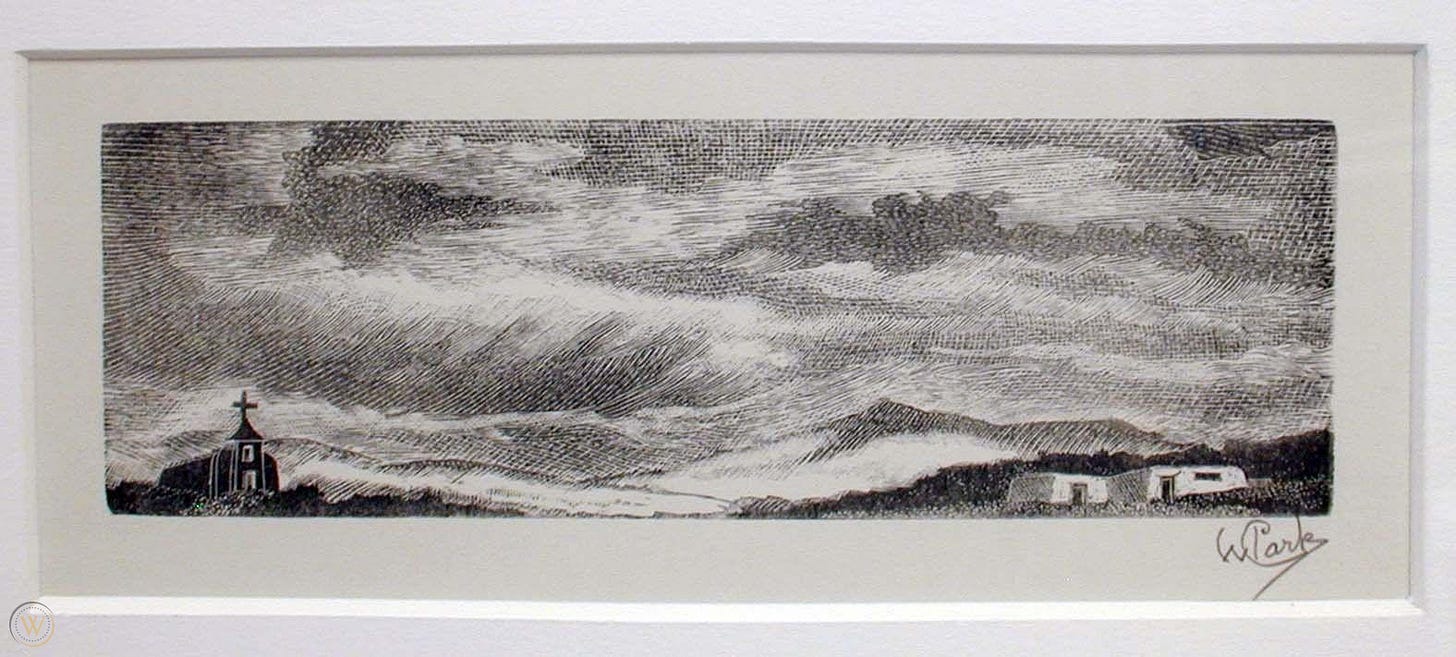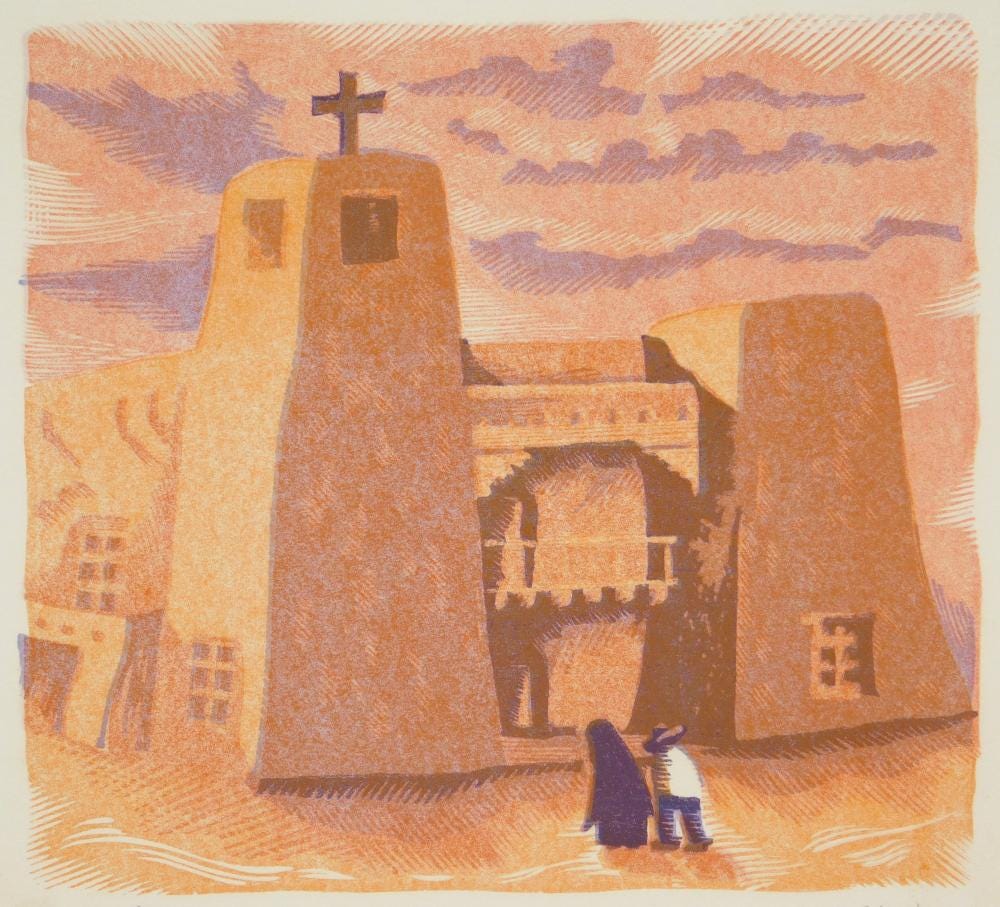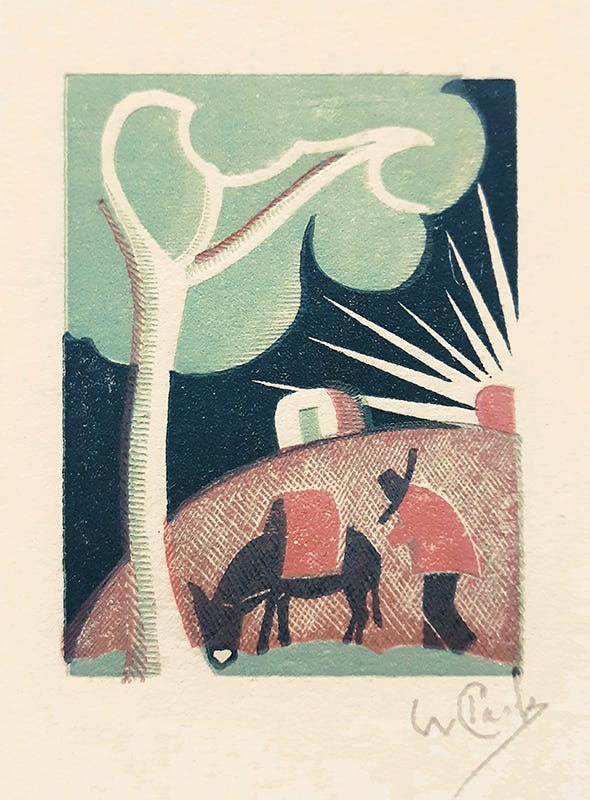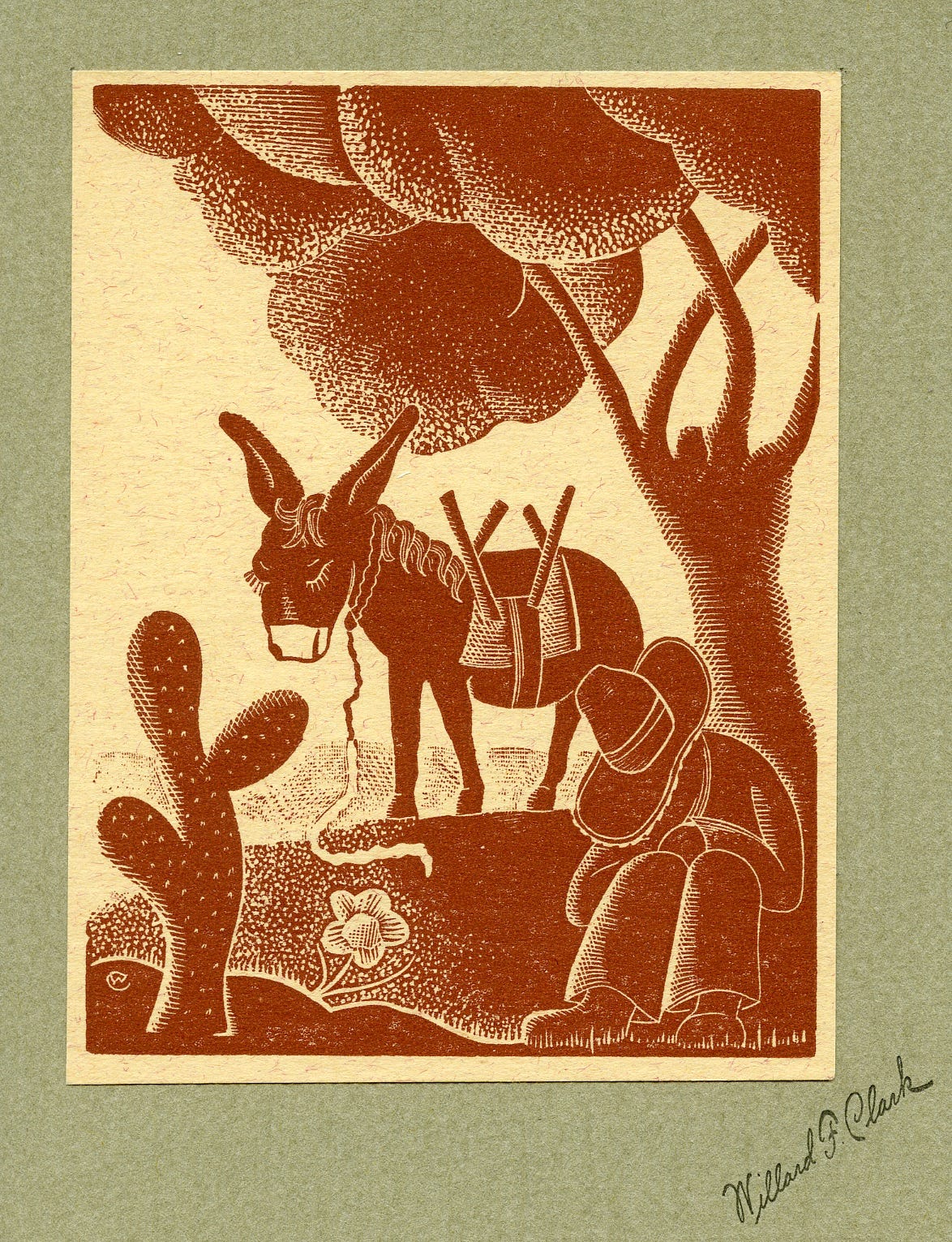Hello, Santa Fe SubStackers,
As I wrote in my last post, “Origin Story of Santa Fe Substack”, I was given a belated Christmas present in mid-March, by my realtor, now my “biggest fan” in Santa Fe, who I affectionately call “Amy G”. It’s a small illustrated book of engravings and remembrances about life in early 20th century Santa Fe, independently-published by Gibbs Smith in Salt Lake City, that is historically illuminating, entirely personal, and thoroughly charming, written by a true maverick and artist, about his time living in Santa Fe during the years 1928-1943.
The author’s name is Willard F. Clark, born in a suburb of Boston in 1910, but his family soon moved to Argentina when his father became president of General Motors there. In 1928, on his way to California, Willard stopped in Santa Fe, and it was no coincidence that he fell in love with the 7200-foot altitude of the Sangre de Cristo Mountains which reminded him of the foothills of the Andes.
“It also helped that he was fluent in Spanish, as Santa Fe and northern New Mexico were mostly Spanish-speaking areas. Willard decided to stay.”
This quotation is from Willard’s grandson, Kevin Ryan, who spent much of his early years with his grandfather, studied engraving with him, preserved his grandfather’s art, and also wrote the introduction to this book.
Willard was a fine engraver, creating original hand-made prints of everything he saw around him: Catholic churches, funeral processions, old adobe homes, local weavers, Christmas masses, Native American potters (who, of course, he still referred to as “Indians”), the gorgeous St. Francis Cathedral, the still unpaved streets like Canyon Road (soon to become one of the most prestigious art markets in the world), The Palace of the Governors, the railroad station at Lamy, La Fonda Hotel on the Plaza, the old Guadalupe Church, Camel Rock, Sena Plaza, Santa Fe’s historic Central Plaza, along with countless santos, farolitos, santuarios… so many words, rituals, and traditions - entirely Spanish, or Mexican American. An education all unto itself.
Here are just a few of Willard’s remembrances. (I have italicized his words.):
SANTA FE
Came in on the La Vegas Highway onto what was then College Street to La Fonda Hotel on the plaza.
(Nope it’s not Las Vegas, Nevada, the obscene gambling capital of America, but quaint, small-town, Las Vegas, New Mexico, home of the Montezuma Hot Springs, but still a far cry from what will become Santa Fe “chic”.)
The plaza, a basic design used by the Spaniards all over the world, is so functional. If you need to do some shopping, it is all right there under the “portales” of the buildings that surround the park. If you are old, you sit on a bench and hope an old friend will come by and sit with you. If you are young, a stroll through the park may brighten your day with a smile from a pretty girl.
The band concerts on Sunday, the fiestas, the dancing in the park…
Now the old stores and shops are art galleries, boutiques - you never see anyone you know. The tourists have taken over and the plaza no longer belongs to the people of the village.
SENA PLAZA
One of the interesting old buildings - it’s important to me, as it was the birthplace of my print shop… where the first very bad woodcut was made.
Sidenote: Major José D. Sena built this house for his bride Doña Isabel Cabeza de Baca in 1831, at which time Santa Fe belonged to Mexico. In 1846 Santa Fe became part of the United States, after the Mexican-American War was “won by America”.
This building is typical of the old Spanish homes of this period, rectangular with a court, or garden, in the middle. Before plumbing, the well was usually in the middle of this court. The house usually just grew with the family: as the children started new families, more rooms were built. They learned to be tolerant of each other in trade for security.
Personally, Sena Plaza is my, Trules’, favorite structure in old Santa Fe, because of both its turquoise blue-portico-ed exterior which reminds me of the old shoot-'em-up cowboy towns of my tv youth, and the beautiful interior courtyard which used to be the Sena family’s sprawl of bedrooms, but which is now the charmingly-designed courtyard of boutiques, shops, and restaurants, including the one and only jazz club in town, the classy, NY-styled Club Legato.
THE OLD CROSS OF THE MARTYRS
The Pueblo Indians were the first people of the area with their own culture and faith, trying to make a living farming this arid land with occasional raids from the Navajos and Apaches who did not seem to like the idea of that kind of work.
Then came the Spaniards with the greed for gold and the need to convert all other people to their faith and way of living. These conquerors were not kind to those who resisted. So the Northern Pueblos got together and escorted them off their land.* The Indians did not try to convert them: just go home and leave us alone.
Even to this day, they do not get along very well.
* The “Pueblo Revolt” of 1680, also known as “Popé's Rebellion”, was an uprising of most of the indigenous Pueblo people against the Spanish colonizers in the province of Santa Fe de Nuevo México, larger than present-day New Mexico, due to the cruelty of the Spanish missionaries towards the native Americans.
I love the simplicity with which Clark describes the complicated cultural conflict, and indeed, warfare, between the Spanish colonizers and the Native Americans. Would I had written about it myself, I would have no doubt loaded my prose with far harsher modern-day judgment and criticism.
SATURDAY NIGHT
The shop is closed, the moon is full, the dogs are howling, a good friend drops by with a little home brew for relaxing. these are prohibition days, and that was all we had. It was bad but it didn’t take long before we were really relaxed! At the time, it seemed the thing to do, get the guitar and join the dogs. This, like the home brew, was very bad, but when you are relaxed you do not notice.
Now it is much simpler: a couch, a can of beer, t.v., and a ball game. But there is just one difference: your good friend is not there.
Right on, Willard! Today, it’s just a quick drive to the dispensary. Legalized recreational enhancements. Electronic connections to your friends around the world. Retirement! What else do you need?
See you next time, amigos!!!!
Trules
If you enjoyed this post, or any previous ones, please LIKE it (by clicking the Heart), and LEAVE A COMMENT. It helps build an enthusiastic and interactive readership.
Also, if you have any friends who you think might enjoy Santa Fe Substack, PLEASE SHARE IT WITH THEM.
Thanks so much!!!




